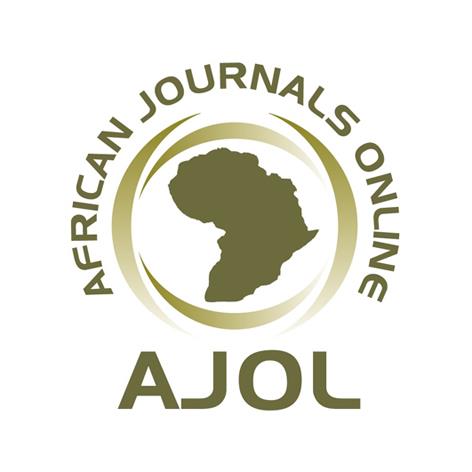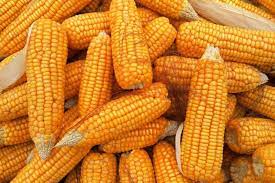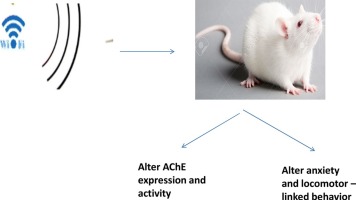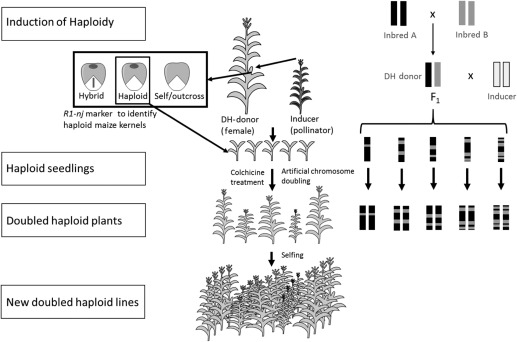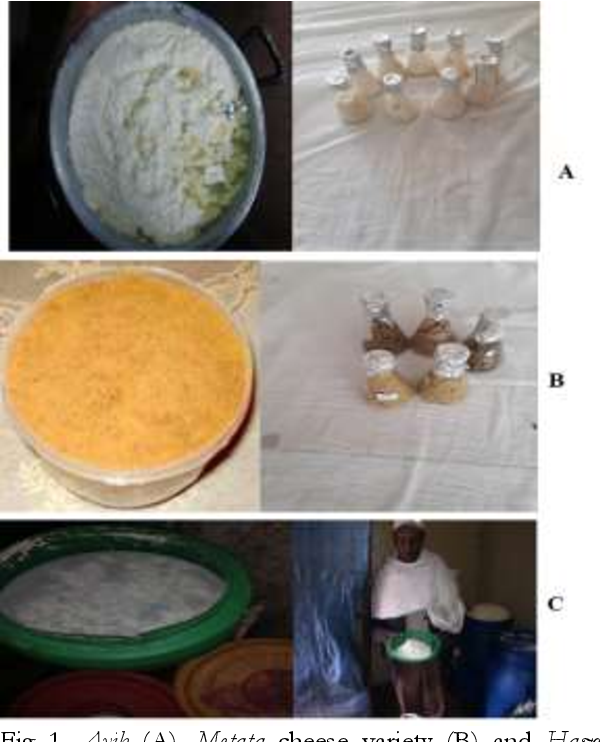Parasites of Commercially Important Fish Species Caught for Food in Lake Ziway, Ethiopia
Downloads
Background: In order of importance, the most commercially important fish species often caught for food in Lake Ziway are Oreochromis niloticus, Clarias gariepinus, Carassius carassius, and Cyprinus carpio. Some fish parasites have been reported in this lake, and the lake ecosystem appears to be conducive to parasite propagation, which may have an impact on fish marketability and societal health.
Objective: The purpose of this study was to look into the prevalence of major fish parasites in four of the most commercially important fish species in Lake Ziway, as well as their effects on the commercial values of host fishes and the health of fish consumers.
Materials and Methods: From May to July 2019, the study was carried out by purchasing random samples of live fish from local fishermen at Wafiko, Korokonch, and Kafteria landing sites and administering a research questionnaire to various stakeholders. Within three months, 240 specimens from the four species were examined in the Laboratory of Batu Fish and Aquatic Life Research Center.
The data were analyzed using SPSS software.
Results: About 87.5% of the fish examined were found to be infested with 64.2% (trematodes), 42.5% (nematodes), 40% (crustaceans), 17.1% (cestodes) and 1.3% (Acantocephala). The fish examined were found to be heavily infested with zoonotic Clinostomum, Contraceacum, and Capillaria species. Thus, fishers were losing some catches due to the effect of parasites. The differences in the prevalence of parasites among the studied fish species were statistically significant (P = 0.00), but it was not
statistically significant for the fish sexes (P = 0.60).
Conclusion: Lake Ziway's commercially important fish species are heavily infested with various types of external and internal parasites, which have both health and economic consequences for the people living on raw fish as food. Therefore, it is vital that awareness creation is done and sanitary measures are taken to stem the problem of human health caused because of eating raw fish and to enhance the productivity of the lake ecosystem.
Abadi Amare, Alula Alemayehu and Alemu Aylate. 2014.
Prevalence of internal parasitic helminthes
infected Oreochromis niloticus (Nile Tilapia), Clarias
gariepinus (African catfish) and Cyprinus carpio
(Common carp) in Lake Lugo (Hayke), Northeast
Ethiopia. Journal of Aquaculture Research and
Development, 5(3): 1–5.
Abebe Getahun. 2017. The freshwater fishes of Ethiopia:
diversity and utilization. View Graphics and Printing
Plc. Pp. 349.
Abowei, J., Briyai, O. and Bassey, S. 2011. A review of
some basic parasite diseases in culture fisheries
flagellids, dinoflagellides and ichthyophthriasis,
ichtyobodiasis, coccidiosis trichodiniasis,
helminthiasis, hirudinea infestation, crustacean
parasite and ciliates. British Journal of Pharmacology
and Toxicology, 2(5): 213–226.
Aloo, P. 2002. A comparative study of helminth parasites
from the fish Tilapia zillii and Oreochromis
leucostictus in Lake Naivasha and Oloidien Bay,
Kenya. Journal of helminthology, 76(2): 95–102.
Amer, O. 2014. The impact of fish parasites on human
health. Journal of the Egyptian Society of Parasitology,
(1): 249–274.
Barber, I., Hoare, D. and Krause, J. 2000. Effects of
parasites on fish behavior: a review and
evolutionary perspective. Reviews in Fish Biology
and Fisheries, 10(2): 131–165.
Bichi, A. and Dawaki, S. 2010. A survey of ecto-parasites
on the gills, skin and fins of Oreochromis niloticus at
Bagauda fish farm, Kano, Nigeria. Bayero Journal
of Pure and Applied Sciences, 3(1): 83–86.
Brian, C., Matolla, G., Ngeiywa, M. and Yongo, E. 2018.
Influence of rainfall seasonality on endo-helminth parasites of Oreochromis niloticus
baringoensis (Trewavas, 1983) at River Molo Inlet
in Lake Baringo, Rift Valley, Kenya. Journal of
Aquatic Science and Marine Biology, 1: 34–41.
Bush, A., Lafferty, K., Lotz, J. and Shostak, A. 1997.
Parasitology meets ecology on its own terms.
Journal of Parasitology, 33: 575–583.
Calhoun, D., McDevitt-Galles, T. and Johnson, P. 2018.
Parasites of invasive freshwater fishes and the
factors affecting their richness. Freshwater Science,
(1): 134–146.
Carp, C. 2007. Metazoan Parasites of Bleak (Alburnus
alburnus), Crucian Carp (Carassius carassius) and
Golden Carp (Carassius auratus) in Enne Dam
Lake, Turkey" Mustafa Koyun and “F. Naci
Altunel" Institute of Science and Technology,
Uludag University, Bursa, Turkey. International
Journal of Zoological Research, 3(2): 94–100.
Copp, G., Cerny, J. and Kovac, V. 2008. Growth and
morphology of an endangered native freshwater
fish, crucian carp, Carassius carassius, in an English
ornamental pond. Aquatic Conservation: Marine and
Freshwater Ecosystems, 18(1): 32–43.
Cribb, T. and Bray, R. 2010. Gut wash, body soak, blender
and heat-fixation: approaches to the effective
collection, fixation and preservation of
trematodes of fishes. Systematic parasitology, 76(1):
–7.
Crotti, M. 2013. Digenetic trematodes: An existence as
parasites. Brief general overview. Microbiologia
Medica, 28(2): 97–101.
Edema, C., Okaka, C., Oboh, I. and Okogub, B. 2008. A
preliminary study of parasitic infections of some
fishes from Okhuo River, Benin City. Nigeria.
International Journal of Biomedical Health Sciences,
(3): 107–112.
Eshetu Yimer. 2000. Preliminary survey of parasites and
bacterial pathogens of fish at Lake Ziway.
SINET: Ethiopian Journal of Sciences, 23(1): 25–33.
FAO (Food and Agriculture Organization). 2018. The
state of world fisheries and aquaculture. Meeting
the sustainable development goals. Food and
Agriculture Organization of the United Nations,
Rome. Pp. 210.
Florio, D., Gustinelli, A., Caffara, M., Turci, F., Quaglio,
F., et al. 2009. Veterinary and public health
aspects in tilapia (Oreochromis niloticus) aquaculture
in Kenya, Uganda and
Ethiopia. Ittiopatologia, 6(12): 51–93.
Gumpinger, P. 2016. Parasite species richness of fish
from Lake Baringo, Kenya. PhD Dissertation,
University of Natural Resources and Applied Life
Sciences, Austria. Pp. 81.
Haftom Abay. 2018. A Study of prevalence of fish
parasite in Hashenge Lake, Tigray, Ethiopia.
Journal of Veterinary Science and Animal Husbandry,
(2): 1–7.
Hailekiros Gebreegziabher and Assefa Kebede. 2017.
Review on distribution of endo-parasites of fish
in Ethiopia. Parasite epidemiology and control, 2(2):
–47.
Hayal Desta and Brook Lemma. 2017. SWAT based
hydrological assessment and characterization of
Lake Ziway sub-watersheds, Ethiopia. Journal of
Hydrology: Regional Studies, 13: 122–137.
Ito, E. 2017. Survey of parasites of two fish species
(Tilapia zillii and Clarias gariepinus) in Ase River
Catchment, Delta State, Nigeria. Journal of Coastal
Life Medicine, 5(10): 417–421.
Jossy Bekele and Daniel Hussien. 2015. Prevalence of
internal parasites of Oreochromis niloticus and
Clarias gariepinus fish species in Lake Ziway,
Ethiopia. Journal of Aquaculture Research and
Development, 6(2): 1–4.
Justine, J., Beveridge, I., Boxshall, G., Bray, R., Moravec,
F. and Whittington, I. 2010. An annotated list of
fish parasites (Copepoda, Monogenea, Digenea,
Cestoda and Nematoda) collected from
Emperors and Emperor Bream (Lethrinidae) in
New Caledonia further highlights parasite
biodiversity estimates on coral reef fish. Zootaxa,
(1): 1–40.
Kayis, S., Ozcelep, T., Capkin, E. and Altinok, I. 2009.
Protozoan and metazoan parasites of cultured
fish in Turkey and their applied treatments. The
Israeli Journal of Aquaculture–Bamidgeh, 61: 93–102.
Khalil, M., El-Shahawy, I. and Abdelkader, H. 2014.
Studies on some fish parasites of public health
importance in the southern area of Saudi Arabia.
Revista Brasileira de Parasitologia Veterinaria, 23:
–442.
Khalili Tilami, S. and Sampels, S. 2018. Nutritional value
of fish: lipids, proteins, vitamins, and minerals.
Reviews in Fisheries Science and Aquaculture, 26(2):
-253.
Kiprono, S. 2017. Fish parasites and fisheries productivity
in relation to extreme flooding of Lake Baringo,
Kenya. MSc Thesis. Kenyatta University, Kenya.
Pp. 93.
Lemma Abera. 2013. Study on temporal variation of
internal fish parasites in Lake Ziway, Ethiopia.
African Journal of Fisheries Science, 1(1): 1–4.
Lemma Abera, Abebe Getahun and Brook Lemma. 2014.
Composition of commercially important fish
species and some perspectives into the biology of
the African Catfish, Clarias gariepinus (Burchell), Lake Ziway, Ethiopia. International Journal of
Advanced Research, 2: 864–871.
Lemma Abera. 2016. Current status and trends of fishes
and fishery of a shallow rift valley lake, Lake
Ziway, Ethiopia. PhD Dissertation, Addis Ababa
University, Ethiopia. Pp. 208.
Lynch, A., Cooke, S., Deines, A., Bower, S., Bunnell, D.,
et al. 2016. The social, economic and
environmental importance of inland fish and
fisheries. Environmental Reviews, 24(2): 115–121.
Marcogliese, D. 2004. Parasites: Small players with crucial
roles in the ecological theater. EcoHealth, 1(2):
–164.
Marshet Adugna, Awote Teklu and Zenebe Tadesse.
Prevalence of parasites of Nile tilapia
(Oreochromis niloticus) and African Big Barb
(Labeobarbus intermidus) fish in Gigel Gibe-I Dam,
Jimma Zone, Ethiopia. American-Eurasian Journal
of Scientific Research, 13: 18–24.
Mathenge, C. 2010. Prevalence, intensity and pathological
lesions associated with helminth infections in
farmed and wild fish in Upper Tana River Basin,
Kenya. PhD Dissertation, University of Nairobi,
Kenya. Pp. 161.
Mohammed Reshid, Marshet Adugna, Yisehak Tsegaye,
Nesibu Awol and Awot Teklu. 2015. A study of
Clinostomum (trematode) and Contracaecum
(nematode) parasites affecting Oreochromis niloticus
in Small Abaya Lake, Silite Zone, Ethiopia. Journal
of Aquaculture Research and Development, 6: 1–4.
Oros, M., Scholz, T., Hanzelova, V. and Mackiewicz, J.
Scolex morphology of monozoic cestodes
(Caryophyllidea) from the Palaearctic Region: A
useful tool for species identification. Folia
Parasitologica, 57(1): 37–46.
Ossiander, F. and Wedemeyer, G. 1973. Computer
program for sample sizes required to determine
disease incidence in fish populations. Journal of the
Fisheries Board of Canada, 30(9): 1383–1384.
Pal, J., Shukla, B., Maurya, A., Verma, H., Pandey, G. and
Amitha, A. 2018. A review on role of fish in
human nutrition with special emphasis to
essential fatty acid. International Journal of Fisheries
and Aquatic Studies. 6(2): 427–430.
Paperna, I. 1996. Parasites, infections and diseases of fish
in Africa: an update. CIFA technical paper. No.
FAO, Rome. Pp. 220.
Raissy, M. and Ansari, M. 2012. Parasites of some
freshwater fish from Armand River,
Chaharmahal va Bakhtyari Province, Iran. Iranian
journal of parasitology, 7(1): 73–79.
Rasouli, S., Nekuifard, A., Azadikhah, D., Ahari, H.,
Anvar, A., et al. 2012. Ectoparasite infection of
Carassius carassius in water resources of West
Azerbaijan, Iran. Iranian Journal of Fisheries Sciences,
: 156–164.
Shehata, S., Mohammed, R., Ghanem, M., Abdelhadi, Y.
and Radwan, M. 2018. Impact of the stresses
environmental condition on the prevalence of
parasite in freshwater aquaculture. Journal of
Fisheries Sciences, 12(2): 9–19.
Shinn, A., Pratoomyot, J., Bron, J. and Brooker, A. 2015.
Economic impacts of aquatic parasites on global finfish
production. Global Aquaculture Advocate. Pp. 82–
Simkova, A., Jarkovsky, J., Koubkova, B., Barus, V. and
Prokes, M. 2005. Associations between fish
reproductive cycle and the dynamics of metazoan
parasite infection. Parasitology research, 95(1): 65–
Sitja-Bobadilla, A. and Oidtmann, B. 2017. Integrated
pathogen management strategies in fish farming.
Pp. 119–144. In: Jeney, G. (ed.). Fish diseases.
Academic Press.
Temesgen Bihonegn and Getachew Tilahun. 2017. Study
on helminth parasites in Tilapia nilotica from
Lake Ziway, Ethiopia. International Journal of
Advanced Research in Biological Sciences, 4: 21–25.
Yewubdar Gulelat, Eshetu Yimer, Kassahun Asmare and
Jemere Bekele. 2013. Study on parasitic
helminths infecting three fish species from Koka
Reservoir, Ethiopia. SINET: Ethiopian Journal of
Science, 36(2): 73–80.
Copyright (c) 2023 Mekonen Hailu, Brook Lemma, Marshet Adugna, Yacob Hailu

This work is licensed under a Creative Commons Attribution-NoDerivatives 4.0 International License.
- I am authorized by my co-authors to enter into these arrangements.
- I warrant, on behalf of myself and my co-authors, that:
- the article is original, has not been formally published in any other peer-reviewed journal, is not under consideration by any other journal and does not infringe any existing copyright or any other third party rights;
- I am/we are the sole author(s) of the article and have full authority to enter into this agreement and in granting rights to Springer are not in breach of any other obligation;
- the article contains nothing that is unlawful, libellous, or which would, if published, constitute a breach of contract or of confidence or of commitment given to secrecy;
- I/we have taken due care to ensure the integrity of the article. To my/our - and currently accepted scientific - knowledge all statements contained in it purporting to be facts are true and any formula or instruction contained in the article will not, if followed accurately, cause any injury, illness or damage to the user.
- I, and all co-authors, agree that the article, if editorially accepted for publication, shall be licensed under the Creative Commons Attribution License 4.0. If the law requires that the article be published in the public domain, I/we will notify Springer at the time of submission, and in such cases the article shall be released under the Creative Commons 1.0 Public Domain Dedication waiver. For the avoidance of doubt it is stated that sections 1 and 2 of this license agreement shall apply and prevail regardless of whether the article is published under Creative Commons Attribution License 4.0 or the Creative Commons 1.0 Public Domain Dedication waiver.
- I, and all co-authors, agree that, if the article is editorially accepted for publication in Haramaya Journals, data included in the article shall be made available under the Creative Commons 1.0 Public Domain Dedication waiver, unless otherwise stated. For the avoidance of doubt it is stated that sections 1, 2, and 3 of this license agreement shall apply and prevail.





